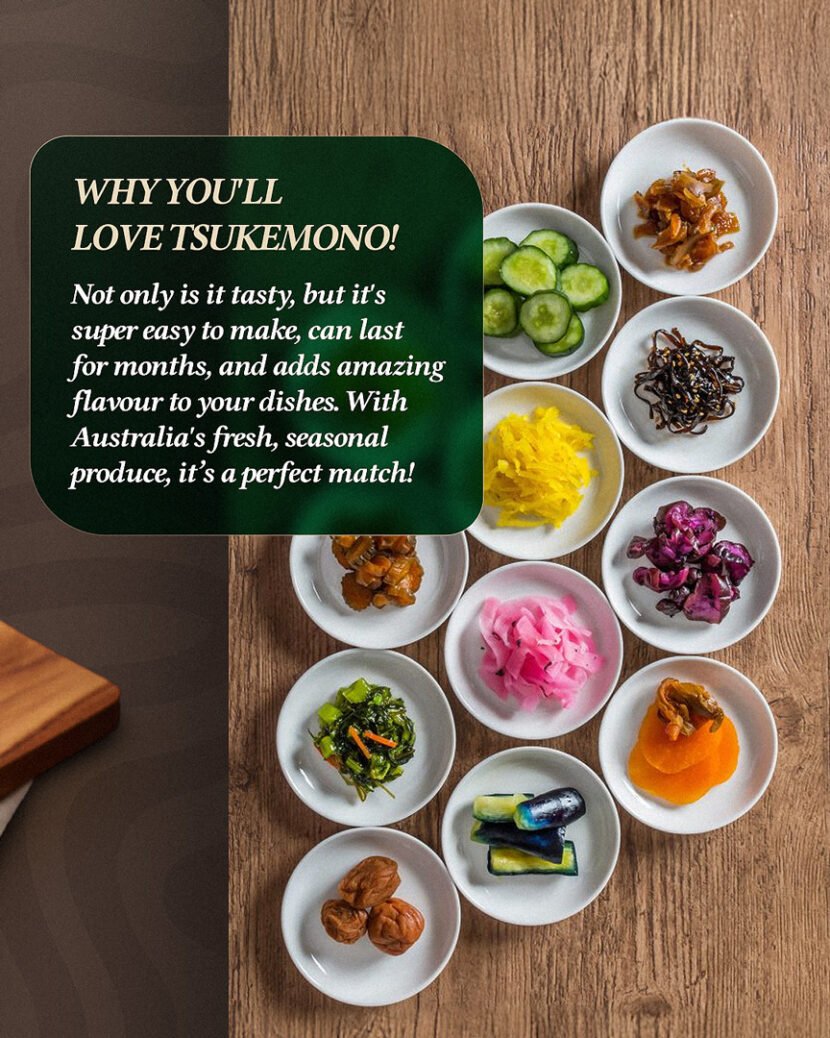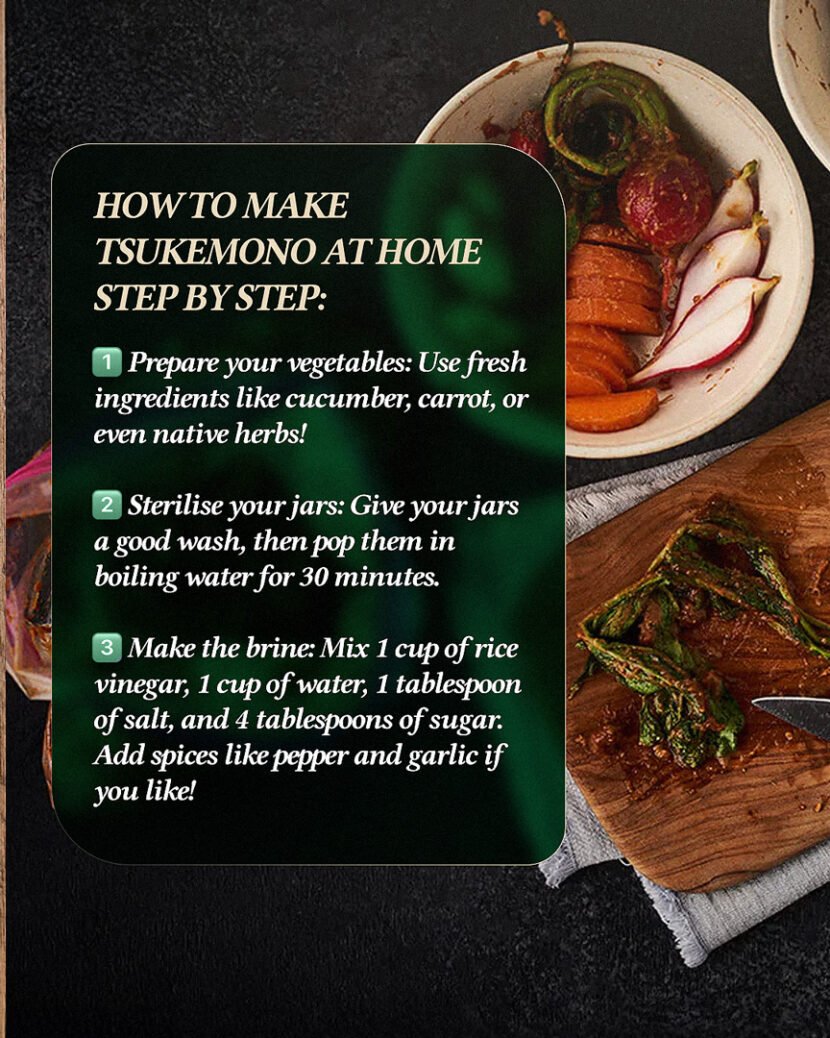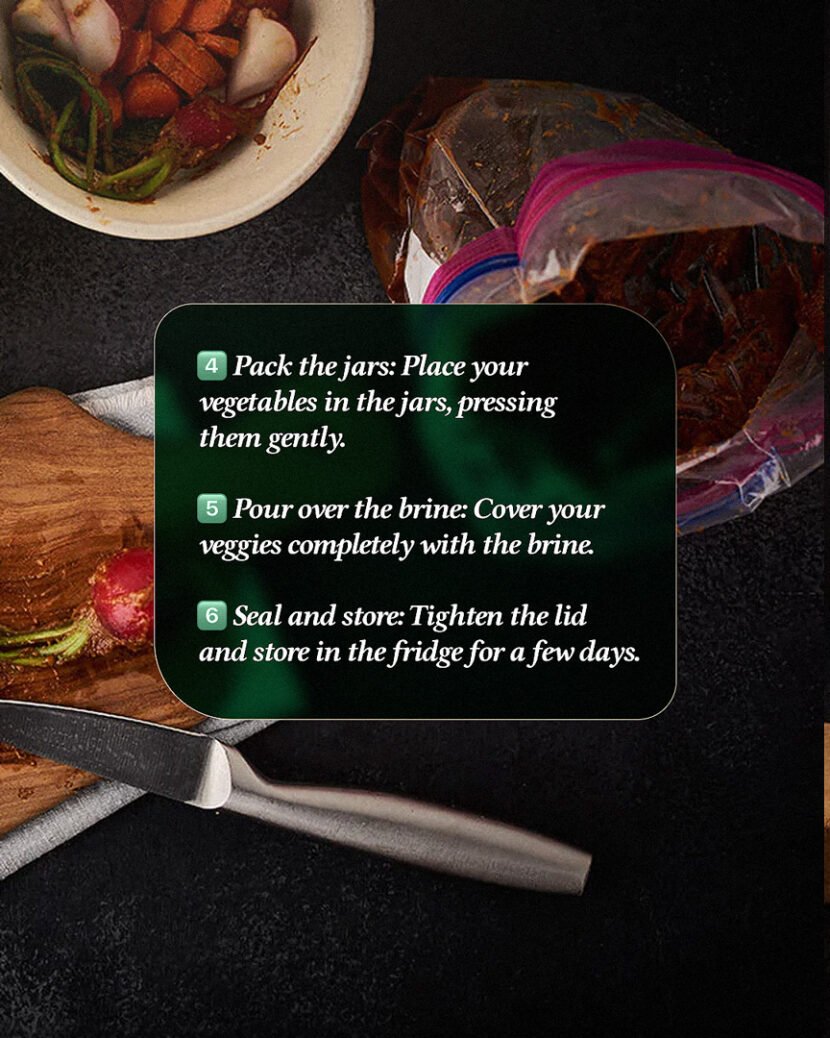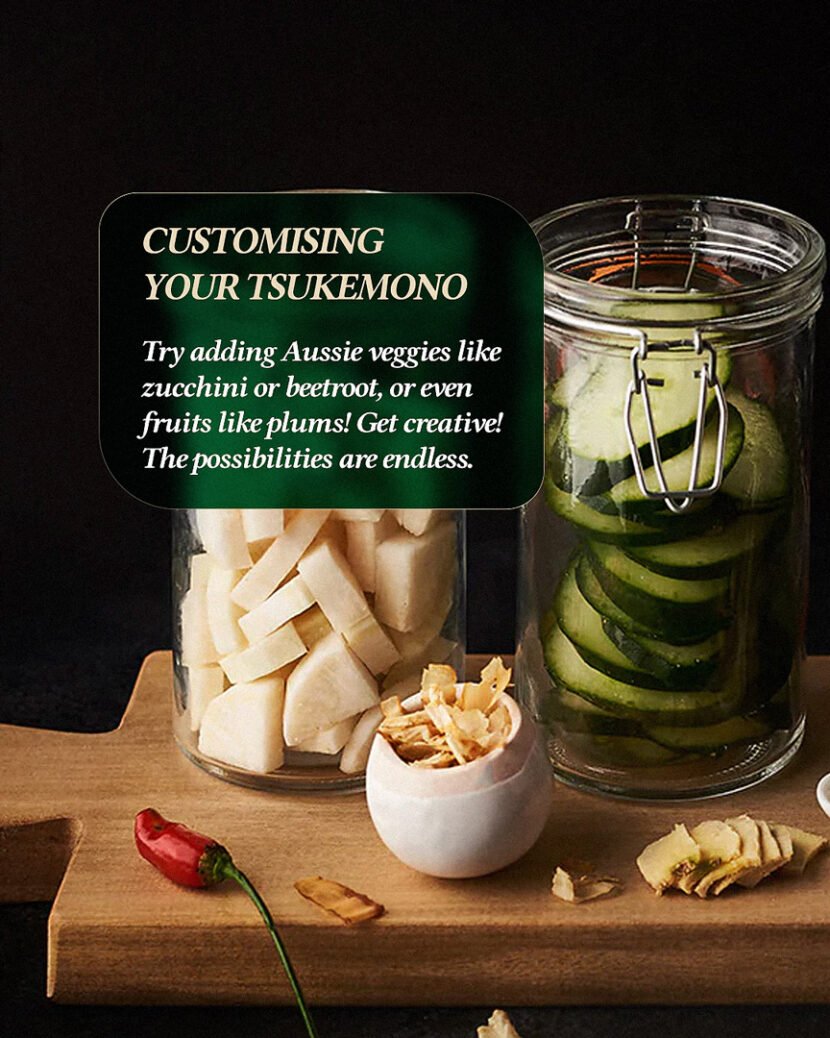Tsukemono – A Fresh Twist on Preserving for Everyday Life
Tsukemono is an easy, delicious, and healthy way to preserve a variety of vegetables, fruits, and herbs. It adds a burst of flavor to any dish and can be a great way to elevate your meals with minimal effort.
In Japan, tsukemono is a long-standing tradition that has made its way into kitchens worldwide. Pickles, in all their various forms, are a common sight in supermarkets and homemade dishes alike.
You may have seen them as spicy condiments in your favorite Asian restaurants or as the tangy side to your sushi. Now, it’s time to bring this simple yet delicious practice into your own home!
Why Tsukemono Works So Well in Australia
Australia’s climate and food culture make tsukemono a perfect match. We’ve got an abundance of fresh, seasonal produce year-round, so why not preserve those flavors for later? Tsukemono can be made with local ingredients like carrots, cucumbers, chillies, and even native Australian plants such as finger limes and wattleseed, adding a bit of our unique flavour to the tradition.
The Beauty of Tsukemono
Tsukemono is about more than just preserving food. It’s about enhancing flavors. The tangy, umami-packed taste of pickled veggies adds a whole new dimension to your meals, making them more exciting. They’re also packed with nutrients, and with the right ingredients, they can last for months! Plus, they make a vibrant addition to your table, offering both visual appeal and a fun way to add some crunch to your dishes.
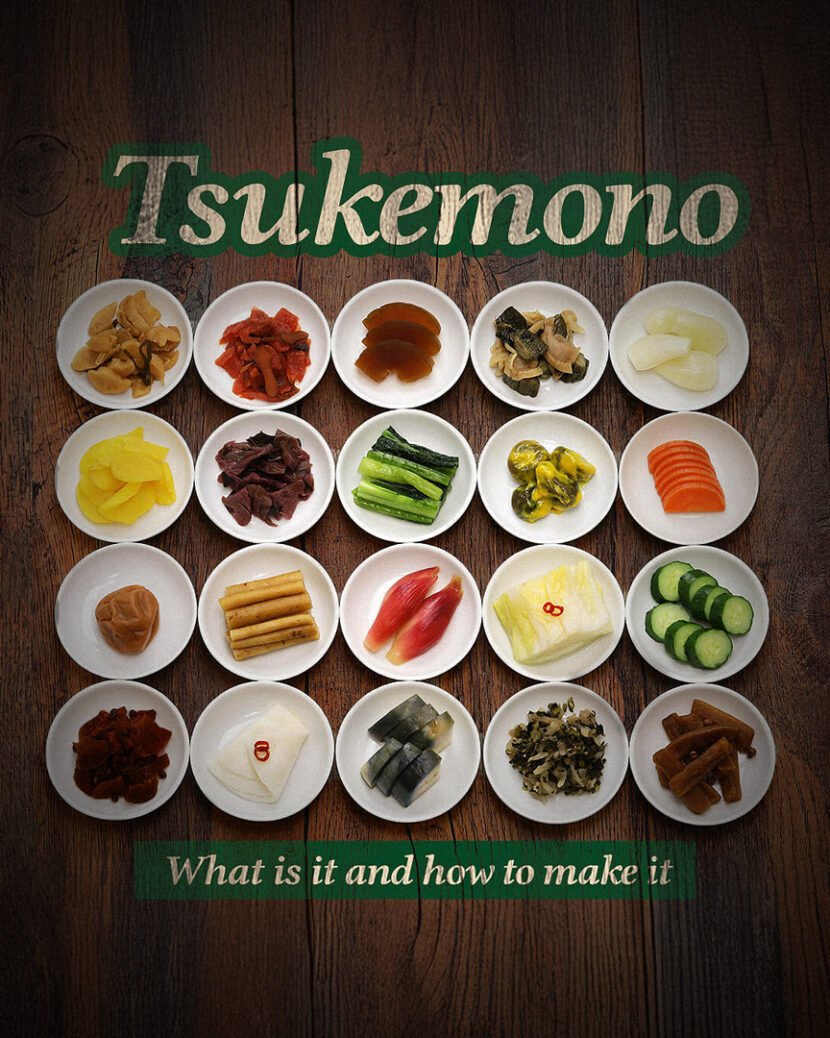
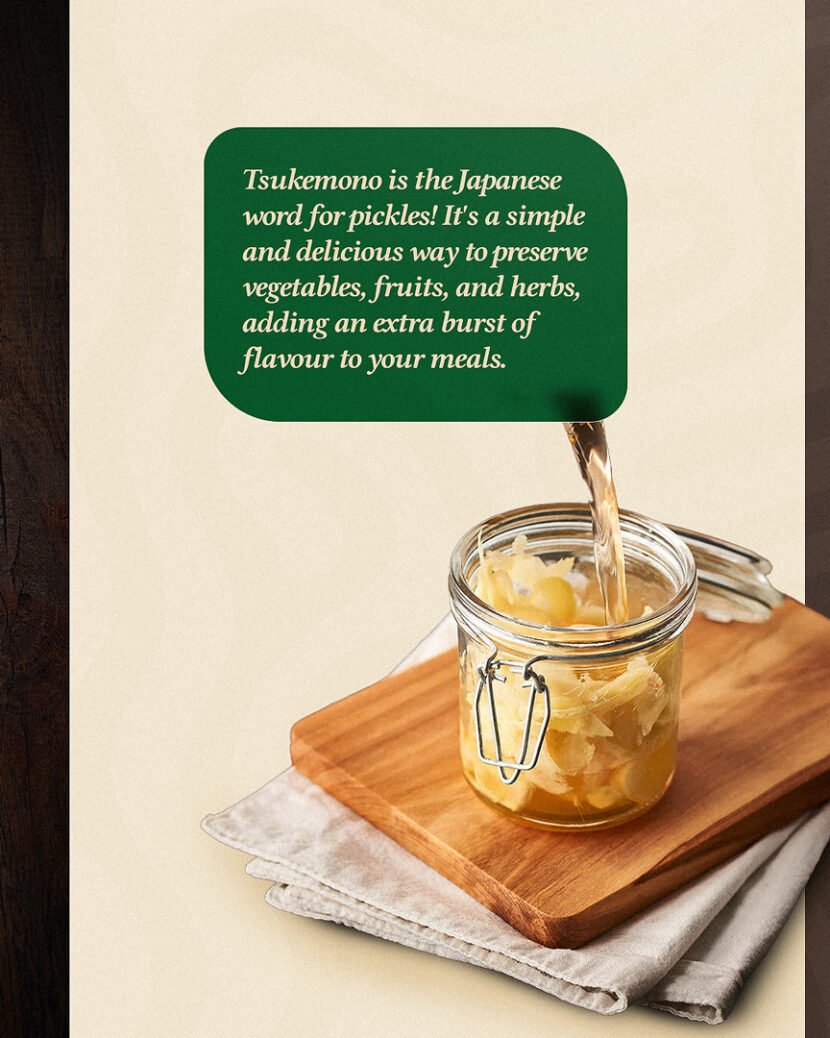
Making Tsukemono at Home Making tsukemono is simpler than you might think. Here’s a step-by-step guide to get you started with this easy pickling process.
Prepare Your Vegetables
Start with fresh, in-season vegetables. In Australia, we’ve got a great variety of produce to choose from: try cucumbers, carrots, radishes, or even eggplant. Be sure to wash them thoroughly and, if needed, slice them into bite-sized pieces.
Soak and Sterilize Your Jars To ensure your pickles stay safe and fresh, you’ll need to sterilize your jars. Simply wash them with hot, soapy water, then place the jars in boiling water for about 30 minutes, ensuring they’re dry before use.
You can also soak your vegetables briefly in a diluted chlorinated solution, but this step is optional – it’s mainly to help clean and preserve.
Blanch (Optional)
Some vegetables, like carrots or green beans, benefit from a brief blanching — just pop them in boiling water for a minute or two, then cool them under cold water.
This step helps preserve their crispness and color. It’s an optional step, but it does make for a nicer texture in the final product.
Create the Pickling Brine
In a mixing bowl, combine equal parts water and rice vinegar (which is mild and slightly sweet, perfect for tsukemono).
Add a pinch of salt for every four parts of sugar — this balance will bring out the right level of sweetness and tang. You can also throw in some optional spices like black pepper, mustard seeds, dried chili, or even a bit of garlic, depending on your taste.
Pack the Jars
Now it’s time to layer your vegetables in the sterilized jars. Don’t forget to pack them tightly but not too tightly — air needs to circulate. Once packed, pour your brine over the top until the vegetables are fully submerged.
Seal and Store
Close the jars tightly with their lids and store them in the fridge.
Tsukemono is best when left to marinate for a few days, allowing the flavors to develop. Depending on your ingredients, your pickles can last for months in the fridge — though they’re so tasty, they’ll probably be gone well before then!
What You Can Pickle
While you can’t go wrong with classic ingredients like cucumbers and carrots, don’t be afraid to experiment! Try pickling local Aussie veggies like baby beets, zucchini, or even native herbs like lemon myrtle. You can also pickle chilies, garlic, or even soft fruits like plums or pears for a tangy-sweet twist.
Tsukemono in Your Everyday Meals
Tsukemono can easily be worked into your day-to-day meals. Serve them as a refreshing side dish, snack, or even use them to liven up your salads, sandwiches, or tacos. You can also use them to add a little zing to rice bowls, grilled meats, or stir-fries. There’s no end to the possibilities, and they’re a fun, easy way to enjoy the tradition of Japanese pickling with a bit of Aussie flair.
So, whether you’re looking to preserve your seasonal harvest or just want to add a bit of crunch and flavor to your meals, making tsukemono is a simple and satisfying way to do it. Give it a go, and who knows, your pickles might just become a new staple in your kitchen!
📱 Mobile (Text or Call): +61 480 416 307

